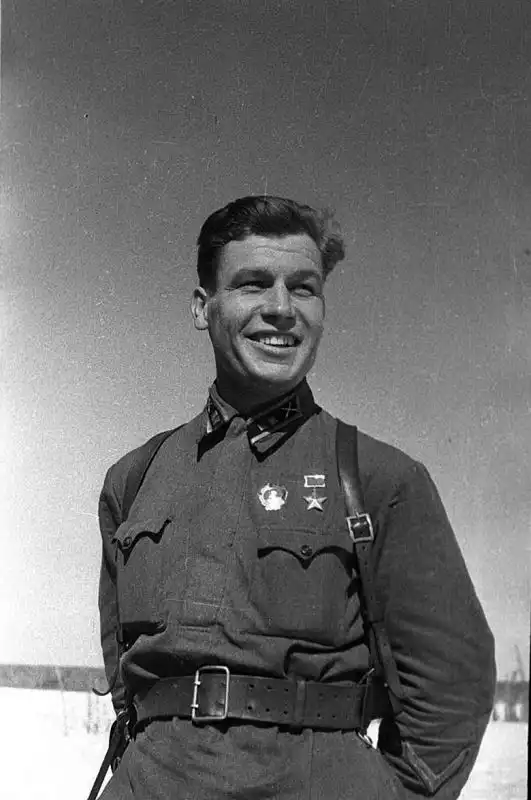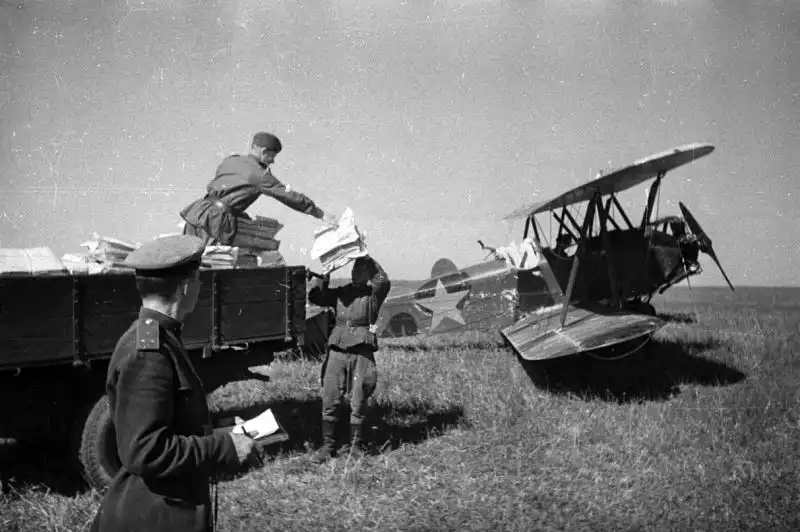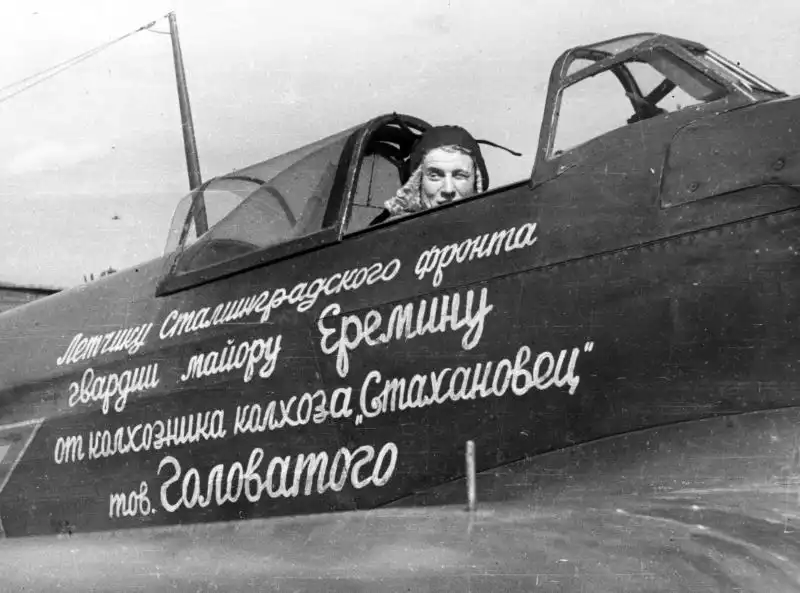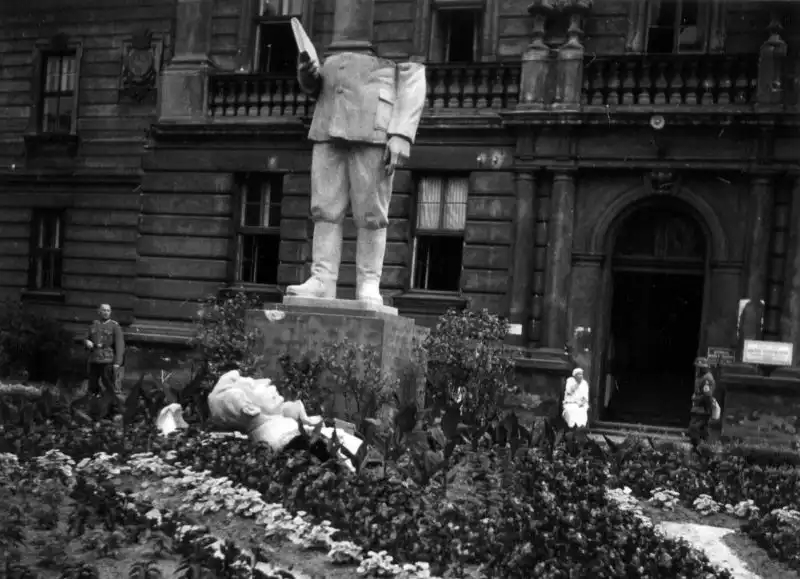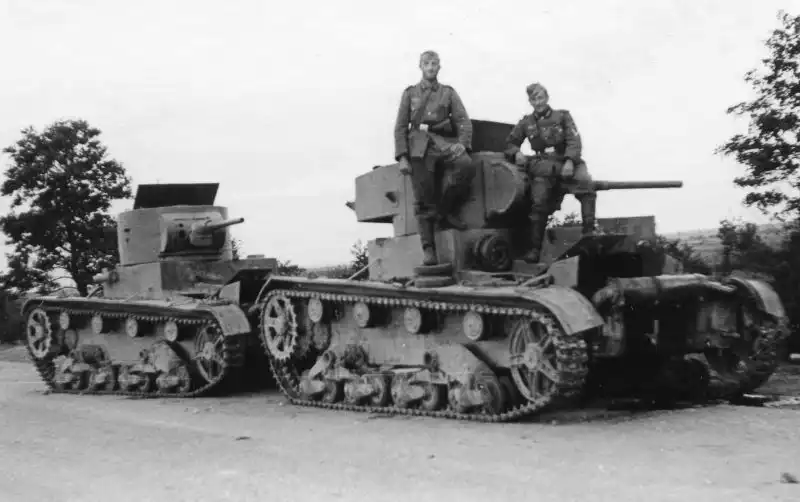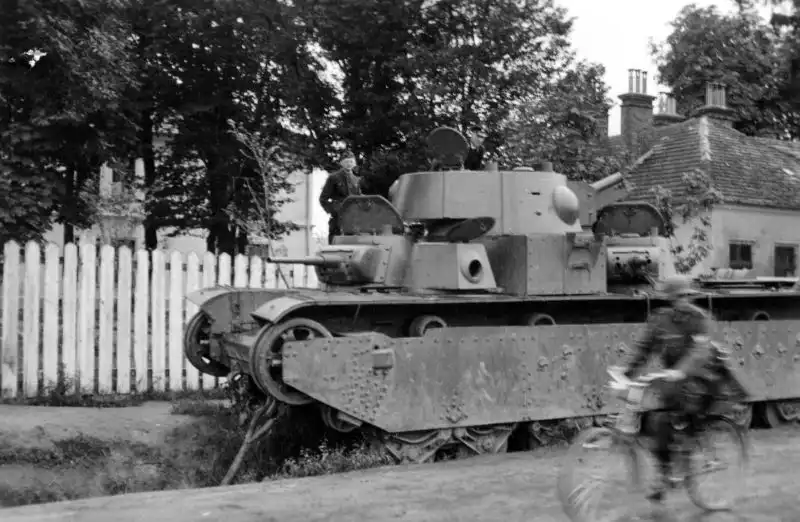Captured at Lviv: German POWs March Into Uncertain Fate – WWII
July 1, 2025 - Reading time: 4 minutes
German POWs march in a long column near Lviv in July 1944. Behind them, Soviet sappers stand with shovels — a chilling symbol of the Red Army's unrelenting push westward.
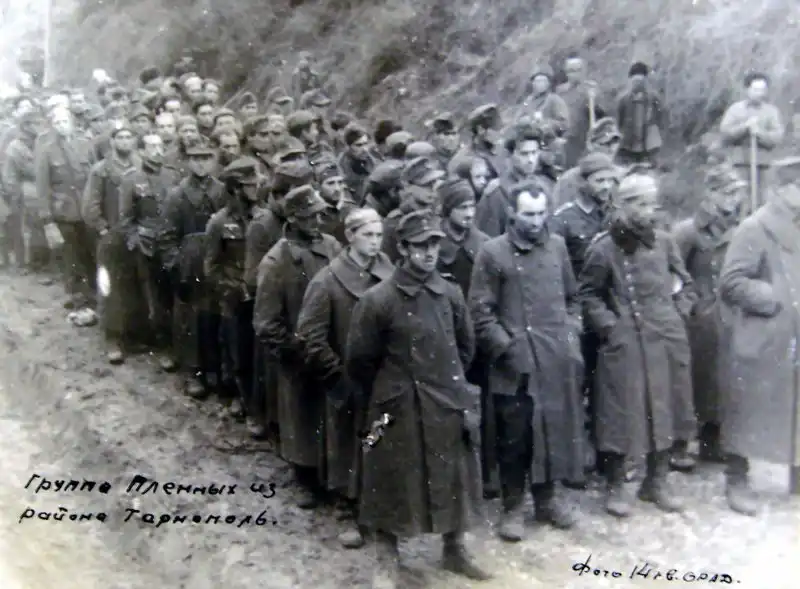
This grim and evocative photo was taken on July 13, 1944, near Ternopil, just west of Lviv, during the liberation of Western Ukraine by the Red Army. It shows a long column of German prisoners of war, members of the Wehrmacht captured during the fierce battles to drive Nazi forces out of Soviet territory.
The image is striking in its symbolism. Dozens of German POWs march in line, shoulders hunched, faces blank or downcast — defeated soldiers now at the mercy of those they once came to conquer. But most unsettling is what stands behind them: Soviet sappers, silently watching, each holding a shovel.
The shovels could have many meanings. Were they preparing to dig fortifications? Clearing mines? Or is the implication darker — that even in captivity, the specter of death lingered over the retreating invaders?
The summer of 1944 marked a major turning point. With Operation Bagration crushing the German Army Group Centre, Soviet forces rolled west at an accelerating pace. Cities like Lviv and Ternopil were key objectives. The Red Army’s momentum was unstoppable, and its soldiers were grimly aware of the atrocities committed on Soviet soil. Capturing enemy troops was a tactical necessity — but not one devoid of emotion.
This image, from the personal wartime album of artillery officer Gilel A. Mirlin, captures the essence of retribution and reversal. The invader becomes the captive. The hunter — the hunted. And in the background, the Red Army stands calm, methodical… with shovels in hand.
📷 Technical photo data:
📅 Date: July 13, 1944
📍 Location: Ternopil, near Lviv, Western Ukraine, USSR
👥 Subjects: German POWs, Soviet sappers
📚 Source of information: Personal album of G. A. Mirlin
-
"German POWs Lviv WWII photos"
-
"captured German prisoners Western Ukraine photos"
-
"POWs uncertain fate WWII Red Army photos"
Category
Search
Categories
- Unidentified WWII Photos (12)
- World War II Photos 1937 (1)
- World War II Photos 1938 (1)
- World War II Photos 1939 (3)
- World War II Photos 1940 (5)
- World War II Photos 1941 (103)
- World War II Photos 1942 (59)
- World War II Photos 1943 (52)
- World War II Photos 1944 (77)
- World War II Photos 1945 (41)
- WWII and Postwar Photos 1946 (1)
